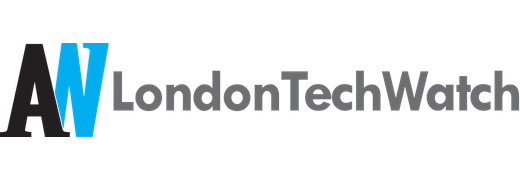There’s little doubt that Duolingo is one of the most exciting arrivals on Wall Street in 2021, but after a difficult end to the year, what’s next for the stock and the edtech industry as a whole?
One of the most difficult aspects of analyzing edtech stocks is the fact that the emergence of the Covid-19 pandemic has created such a seismic push towards digital transformation that it’s hard to tell whether the emerging tech stocks that recently launched IPOs are experiencing inflated market caps, or whether there’s plenty more upside to enjoy.
As we can see from Duolingo’s stock performance since its July IPO, the company enjoyed early growth of around 45.8%. However, the stock has fallen almost 48% in the weeks that followed its peak price of $202.69 with little sign of a reversal.
So, what does Duolingo’s stock performance tell us about the company’s long-term prospects and the future of edtech? Let’s take a deeper look into a complex, but exciting industry:
Overcooked in the Pandemic?
There’s little doubt that Duolingo is one of the most exciting arrivals on Wall Street in 2021, but after a difficult end to the year, what’s next for the stock and the edtech industry as a whole?
One of the most difficult aspects of analyzing edtech stocks is the fact that the emergence of the Covid-19 pandemic has created such a seismic push towards digital transformation that it’s hard to tell whether the emerging tech stocks that recently launched IPOs are experiencing inflated market caps, or whether there’s plenty more upside to enjoy.
As we can see from Duolingo’s stock performance since its July IPO, the company enjoyed early growth of around 45.8%. However, the stock has fallen almost 48% in the weeks that followed its peak price of $202.69 with little sign of a reversal.
So, what does Duolingo’s stock performance tell us about the company’s long-term prospects and the future of edtech? Let’s take a deeper look into a complex, but exciting industry:
Overcooked in the Pandemic?
When exploring price fluctuations in industries that have recently undergone exponential growth, it’s reasonable to allow for market corrections later down the line.
We can observe the extent to which the edtech market has been inflated by exploring the price history of Norwegian edtech platform, Kahoot:
On the Oslo Stock Exchange, Kahoot’s price climbed nearly 1,000% between March 2020 and January 2021, showing the favorable conditions that the Covid-19 pandemic invariably caused for the edtech sector.
However, we can also see that Kahoot also fell back to earth in 2021, with its stock price trading at around one-third the value of its January price.
This is perhaps unsurprising. The pandemic prompted widespread lockdown measures around the world as education and socializing moved digital. Platforms like Kahoot became essential tools for interaction and learning at home. However, as restrictions eased, consumer reliance on edtech platforms waned and traced back to a more sustainable level.
Cause for Optimism
Despite market pullbacks impacting the edtech industry, Maxim Manturov, head of investment research at Freedom Finance Europe, is cautiously optimistic about the future prospects of Duolingo’s stock prices:
“The company’s future depends on its monetization of the platform,” Manturov noted. “For example, as of Q3 2021, active users grew by 13% or 41.7 million and paid users stood at 2.2 million or 5.2% of the total base. Low monetization of the base is one of the company’s key problems, but nevertheless, compared to Q3 2020, the paid user base grew from 4.05% to 5.2%.”
“All in all, it all depends on how the company copes with the changing industry in 2021 and whether it will change its strategy. Duolingo, if it continues to grow its share of paid users, could grow to $140-$150 overall within 12 months. Coursera could grow to the $37-$39 level.”
Potential growth to $140 or $150 represents an upside of almost 50%, which, although not quite the same level of electric growth experienced at the peak of the pandemic, is still an impressive increase.
Motley Fool analyst, Anthony Di Pizio, recently highlighted Duolingo as his favorite stock to buy for 2022, highlighting the fact that the platform has been downloaded over 500 million times at rank 1 in Google’s Play store whilst sitting in rank 3 on Apple’s App Store based on revenue generated in the broad education category.
Di Pizio added that Duolingo’s addressable market is set to continue its expansion in 2022. “For example, the Duolingo app grew by 400% in India during 2020, and it’s estimated that over 500 million people in that country will have accessed the internet for the first time by 2022,” Di Pizio said. “That could set up an explosion in the company’s user base over the mid to long term, as Duolingo offers a cost-effective way to learn global languages like English.”
There’s little doubt that edtech platforms like Duolingo hold plenty of potential for investors looking to capitalize on an industry that’s ripe for further growth over the coming years. However, the challenge will be for prospective buyers to work out how far the ongoing market correction will take the stocks.
Duolingo’s current market price puts the company at a market cap of around $3.81 billion at the time of writing, which doesn’t seem overpriced for an asset with a bright future. With this in mind, entry points of $100 may be advantageous for investors. Although $140-$150 is a reasonable prediction for DUOL over the next 12 months, the future has the potential to be far more lucrative for investors.
In a market that’s looking to overcome the impact of inflation on a global scale, edtech stocks are well-positioned to deliver sustainable long-term growth.


